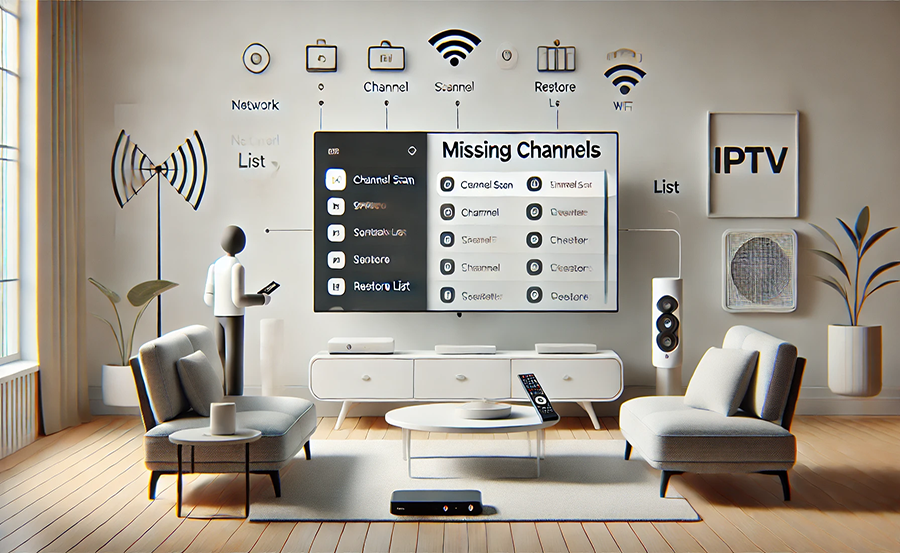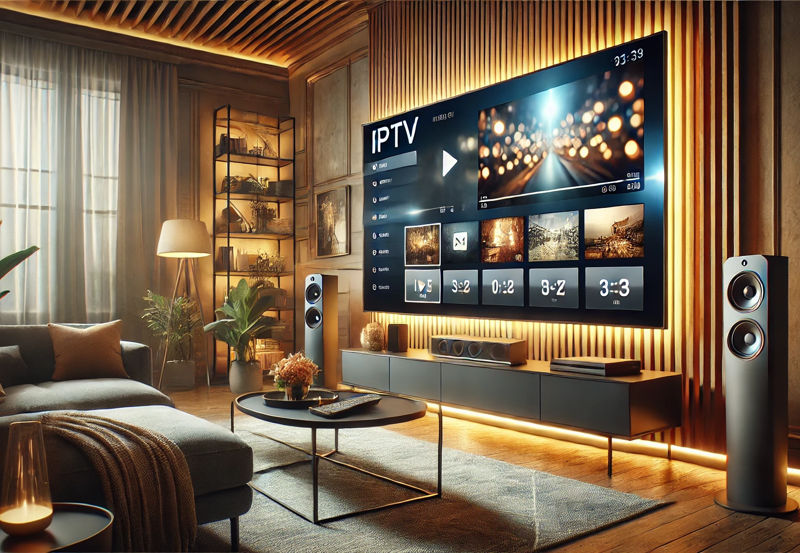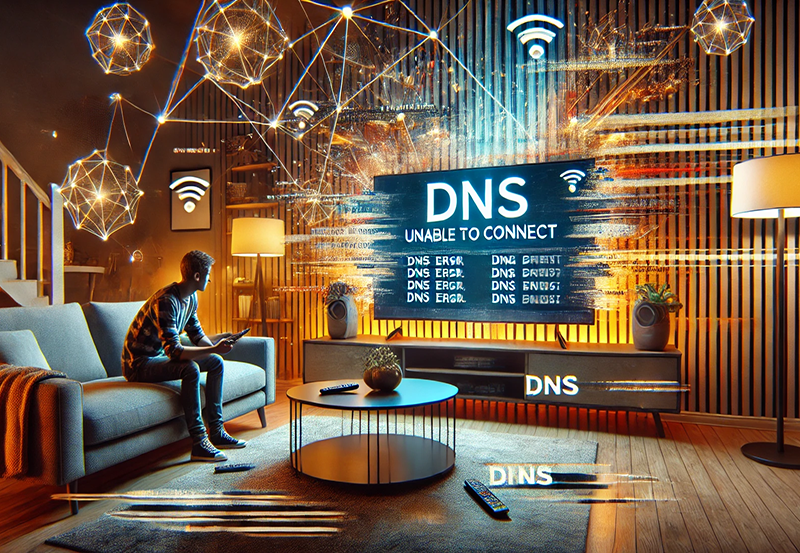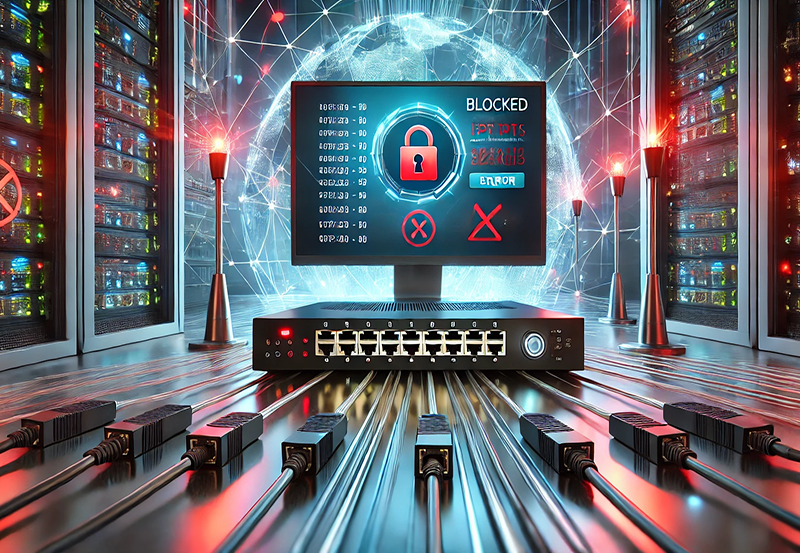The world of IPTV provides a dynamic way to access diverse content, but it comes with its own set of streaming challenges. IPTV subscriptions are gaining popularity among beginners and seasoned viewers alike. Watching your favorite shows without disruptions is crucial to enhance your viewing pleasure. This guide walks you through simple yet effective steps to troubleshoot and resolve IPTV streaming issues, keeping your streaming experience smooth and enjoyable.
Understanding IPTV and Its Challenges
Internet Protocol Television (IPTV) revolutionizes how we consume TV content. Instead of traditional cable or satellite signals, IPTV uses the internet, offering flexibility and accessibility. However, this flexibility comes with unique challenges that can affect your viewing. Buy 1 Year IPTV Subscription and Enjoy Unlimited Content
What is IPTV?
IPTV is a service that delivers television content over Internet Protocol networks, allowing for continuous streaming across various devices. Unlike downloaded media, IPTV streams the content directly, offering numerous channels and on-demand options.
While IPTV provides the convenience of watching anywhere, it relies heavily on the internet quality and service provider capabilities.
Common IPTV Issues
Knowing the potential issues can help in mitigating them swiftly. Common problems include buffering, poor image quality, sound delays, and application crashes. These can result from various factors ranging from network congestion to config errors.
Sometimes, the problem might originate from your device. Challenges like app freezing or playback halting abruptly are typically device-related.
Spotting Buffering Problems
Buffering is the most prevalent issue that disrupts your viewing pleasure. It occurs when the IPTV subscription service cannot supply content fast enough and usually manifests as frequent pauses. Causes may include limited bandwidth or high latency.
Tackling Image and Sound Glitches
Distorted images or sound can result from inadequate bitrate or incompatible device configurations. Addressing these requires tweaks in both your device settings and IPTV application choices.
Optimizing Network Settings for Smooth Streaming
Ensuring your network is optimized is fundamental to preventing IPTV issues. Here are key steps that can improve performance and reduce interruptions.
Check Internet Speed
Network speed is critical for quality streaming. Here is how to ensure your connection is up to the task:
- Use online tools to test your internet speed and ensure it’s sufficient for streaming.
- Consider upgrading your internet plan if your current speed is inadequate.
It’s generally recommended to have at least 10 Mbps for HD content and 25 Mbps for 4K streaming.
Optimize Router Placement
Router placement greatly affects Wi-Fi performance. Try the following adjustments:
- Place the router in a central location to distribute signals evenly.
- Avoid obstacles like walls and devices that might interfere with signals.
Small tweaks in setup can significantly enhance network reliability.
Use Wired Connections
For the best connection stability and speed, opt for a wired Ethernet connection. This minimizes latency and reduces the interference sometimes experienced with Wi-Fi.
Set Up Quality of Service (QoS)
Use the Quality of Service feature in modern routers to prioritize IPTV traffic. This ensures your streaming media gets the bandwidth it requires even when other devices are using the same network.
Device Setup and Configuration
The performance of your IPTV service also hinges on proper device configurations. Ensure your device settings are optimized for the best possible viewing.
Keep Your Device Updated
Regular updates can prevent many issues. Devices running outdated software might not be equipped to handle the latest streaming protocols.
- Ensure that your streaming device is running the latest OS version.
- Update IPTV apps regularly to benefit from performance improvements.
Outdated systems can suffer from compatibility issues that disrupt streaming.
Clear Cache and Unnecessary Data
Cached data can degrade app performance over time. Regularly clear your device’s cache:
- Navigate to your device’s settings to find the cache management option.
- Clear cache and temporary files that may slow down the app.
Freeing up space improves responsiveness and stream quality.
Adjust Streaming Quality
Lowering the stream quality can give smoother playback, especially during peak internet usage times or on lower-bandwidth networks. Most IPTV apps allow you to change stream resolution under settings.
Use Recommended Hardware
Your device’s capability impacts playback quality. Verify that your device meets the service’s hardware requirements, especially for high-definition or ultra-high-definition content viewing.
Troubleshooting IPTV Apps
Even the best IPTV apps can encounter issues that impede service delivery. When problems surface, try these corrective measures.
Reinstall the App
If an IPTV app is malfunctioning, reinstall it. This often resolves glitches by refreshing app files and dependencies.
- Uninstall the application completely from your device.
- Download the latest version from a trusted source and reinstall it.
Ensure a stable version is installed for optimal performance.
Reset Application Settings
Restoring application settings to default can correct errors resulting from improper configurations. Locate the reset option within the app’s settings menu.
Contact Support
If the issue persists despite troubleshooting, get in touch with the service provider’s technical support. They might offer specific solutions or send updates to fix issues.
Explore Alternative Apps
If one app continually fails, consider switching to another IPTV application that provides better performance or features.
Enhancing Your IPTV Experience
Once issues are resolved, explore additional ways to make your IPTV viewing as enjoyable as possible.
Discover New Content
IPTV services often provide vast content libraries. Take the time to explore new channels, shows, and genres you wouldn’t typically choose.
Use Program Guide Features
Make use of built-in program guide features for scheduling and reminders. This ensures you never miss your favorite live broadcasts or specials.
Utilize Parental Controls
If the service includes family accounts, set up parental controls to manage viewing permissions for explorers of younger ages efficiently.
Experiment with Customization
Many IPTV apps offer display and interface customization. Personalize your interface to suit your viewing style, switching themes or arranging channels as you prefer.
Recognizing When to Upgrade
If troubleshooting efforts consistently fail, it might be time to consider an upgrade. Outdated hardware or services can become a recurring issue that no configuration changes can fix effectively.
Consider a New Device
Signs you may need a new device include constant application crashes, slow performance, and overheating. Newer models tend to support more formats and offer better performance improvements.
Evaluate New IPTV Subscriptions
Some subscriptions offer better service in terms of video resolution, content diversity, and customer support. Check reviews and perform a cost-benefit analysis before making a switch.
Upgrading Internet Plans
If your network speeds frequently throttle, explore better internet plans to increase available bandwidth. As high-definition and 4K content demands grow, higher plans may provide needed stability.
Research Service Reviews and Updates
- Ensure you stay informed about service provider updates or network outages.
- Subscribing to newsletters or following service announcements can keep you ahead of issues.
A little research goes a long way in keeping your service smooth.
FAQs: IPTV Troubleshooting and Enjoyment

Here are some frequently asked questions that can further clarify and enhance your IPTV streaming satisfaction:
What is the ideal internet speed for IPTV streaming?
Generally, a minimum of 10 Mbps is recommended for HD quality, while 25 Mbps or higher is advisable for 4K streaming. Faster speeds can also ensure a smooth experience for simultaneous device use.
Why does IPTV buffer during peak hours?
Buffering often intensifies during peak hours due to network congestion. This occurs when many users access the internet simultaneously, reducing overall bandwidth available for each connection.
How do I select a reliable IPTV service provider?
When considering a provider, research reviews, legality, customer support responsiveness, and the variety of content offerings. Opt for well-reviewed and tested services to avoid frequent issues.
Can VPNs help with IPTV buffering?
VPNs can sometimes reduce buffering by avoiding network throttling imposed by ISPs. However, they can introduce slight latency, so choosing a high-speed VPN service is crucial.
Is it necessary to use external player apps for IPTV?
Some IPTV services advise using external player apps for enhanced playback quality and wider compatibility with different video formats. Using recommended players can greatly improve your viewing experience.
Will regular updates fix all IPTV issues?
While updates can resolve many issues by offering new functionalities and bug fixes, they may not address hardware-influenced constraints or third-party app conflicts completely.
How can I improve the user interface of my IPTV app?
Most apps allow minor customizations, including changing themes or arranging channel lineups. Exploring these options within the app settings can help personalize your viewing setup.
Elevate Your Viewing Experience: Top Reasons to Choose IPTV Over Cable





